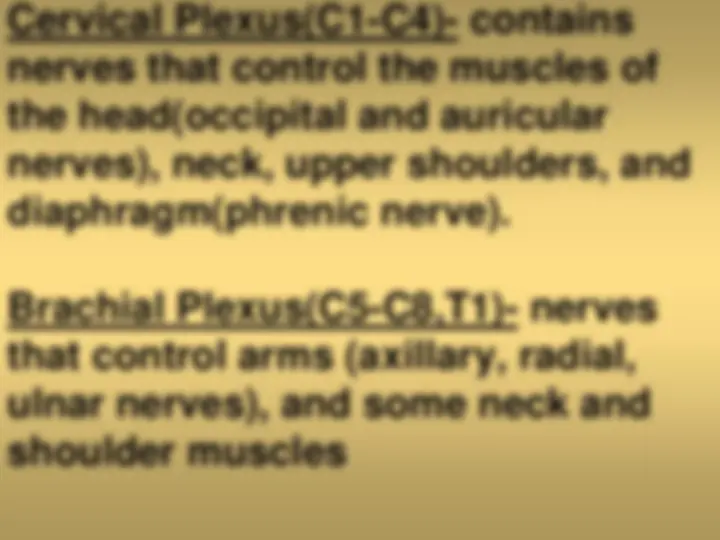


















































































Study with the several resources on Docsity

Earn points by helping other students or get them with a premium plan


Prepare for your exams
Study with the several resources on Docsity

Earn points to download
Earn points by helping other students or get them with a premium plan
Community
Ask the community for help and clear up your study doubts
Discover the best universities in your country according to Docsity users
Free resources
Download our free guides on studying techniques, anxiety management strategies, and thesis advice from Docsity tutors
An in-depth exploration of the nervous system, including its structure, functions, and components such as the central nervous system (CNS) and peripheral nervous system (PNS), neurons, neuroglia, and nerve impulses. Topics covered include the roles of afferent and efferent nerves, the organization of nervous tissue, the function of the myelin sheath, and the processes of synaptic transmission.
What you will learn
Typology: Study notes
1 / 88

This page cannot be seen from the preview
Don't miss anything!

















































































Nervous System
It regulates and coordinates many of the other systems. It controls memory and logical thought, and it gives the body the ability to react or respond to both internal and external stimuli.
Peripheral Nervous System (PNS) All of the nerves outside of the brain and spinal cord.
Afferent- transmits nerve impulses (action potentials) from the sense organs to the CNS. Efferent- transmits impulses from the CNS to the muscles and glands (effectors).
Neurons (nerve cells) Receive and transmit action potentials.
Sensory (afferent) neurons transmit impulse from the sense organs to the CNS.
Cell body- The portion of the cell that contains the nucleus. Also contains nissl bodies, patches of rough ER.
Dendrites- Cell extensions that transmit impulses toward the cell body.
Axons-
Cell extension that carries impulses away from the cell body. Collateral axons may form branches off the axon.
Neuroglia (glial cells) Very abundant. Serve to support the CNS. Can also produce cerebrospinal fluid, help remove bacteria from the CNS, and protect and insulate the axons of many neurons. Examples: Neurolemmocytes or Schwan cells(PNS), Oligodendrocytes(CNS). Both produce myelin on axons of neurons.
Ganglion- A bundles of nerve cell bodies.
Cortex- Gray matter at the surface of the brain.
Nerves- Bundles of white matter (axons with myelin) in the PNS.
Nerve Impulses
Resting potential- A neuron that has a more positive charge on the outside of the cell compared to the inside of the cell (polarized).
Action potential- A reversal in the polarity (depolarization) of the neuron. Sodium ions rush into the cell so the inside is now more positive than the outside of the cell.